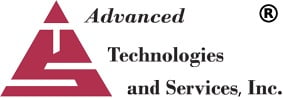Sometime last quarter, a controller at a mid-size VoIP provider finished his Form 499 and wondered why the universal service line on every invoice kept inching upward. He had followed the rulebook: apply the FCC’s safe-harbor ratio of 64.9% to VoIP revenue and 37.1% to wireless sales, multiply those totals by the quarterly contribution factor, and remit the money. What he didn’t realize until a traffic study told the real story is that his network sends barely one-third of its traffic across state lines. The other two-thirds never should have been taxed at the interstate rate.
Why the Numbers Matter More Than the Form
The Universal Service Fund keeps broadband flowing to rural areas, school districts, and low-income households. To pay for that mission, the FCC sets a contribution factor every three months; for 3Q 2025, the factor is 36.0%. Providers multiply that percentage by the interstate and international portion of their telecom revenue. Safe harbor enters the picture only when a carrier cannot or will not analyze its call records. Convenient? Absolutely. Accurate? Rarely. Safe-harbor ratios were designed to keep tiny carriers in compliance, yet they have become the default for companies large enough to know better.
A Quick Example That Hurts
Imagine you invoice $2 million in VoIP services this quarter.
- Using safe harbor, you treat $1.298 million (64.9%) as interstate.
- A traffic study shows the real interstate share is 33%, or $ 660,000.
Apply the 36% contribution factor, and the gap becomes stark: roughly $ 467,000 in USF liability with safe harbor versus $ 238,000 with real data. That is $229 000 you could have plowed into marketing, fiber, or debt reduction instead of sending it to the fund.
What a USF Traffic Study Actually Does
A traffic study is not a spreadsheet trick; it is a disciplined, four-step audit:
- Collect call-detail records from the network.
- Geo-classify every call by origin and destination, tagging it intrastate, interstate, or international.
- Calculate the actual % of Interstate Usage (PIU) for a time period, typically a quarter up to a full year.
- Document the findings in a format the FCC and USAC expressly accept. Section IV.3.B.4 of the current Form 499-A instructions spells out the methodology in detail.
Because each call is accounted for, you can prove the ratio you report. If a regulator questions your figures, ATS has the data to back it up.
Five Payoffs You Feel Right Away
- Smaller remittances — You contribute only for traffic that really crosses state lines.
- Sharper pricing — Lower surcharges mean cleaner, more competitive rate cards.
- Healthier cash flow — Money, once parked at USAC, stays on your balance sheet.
- Audit-ready confidence — The traffic study has a matching data trail.
- Reliable forecasts — Quarterly PIU trends reveal how new products or customer churn affect your interstate mix.
Where We Can Help
Beyond just providing a traffic study to reduce contributions and customer bills, ATS offers near real-time traffic analysis into everyday workflows so that finance, product, and compliance teams all see the same live number.
- Real-time dashboards show traffic by customer, product line, hour of the day, etc.
- What-if modeling lets you test how a new SIP trunk or rate-deck tweak will change interstate exposure before you quote pricing.
- Five-year encrypted archives satisfy FCC retention rules without clogging your servers.
- Flag statistical anomalies, fraud, operational issues, etc.
A deeper feature list lives on the ATS Traffic Study service page, and you can browse how-to articles in our Compliance Hub.
A Case in Point
One such client is Phone.com, a cloud-based phone systems and VoIP provider based in New Jersey that provides communication services for small and medium-sized businesses across the country. They had reached out to us about rising USF costs and were interested in how a traffic study could benefit them. In the end, their Percent of Interstate Usage came back at 31.3% — effectively cutting their USF fees by more than half. Check out the full case study for more information.
How to See Your Own Numbers
- Book a discovery slot. Choose any open time on our demo calendar.
- Upload one week of CDRs through our encrypted portal.
- Review your savings report PIU, safe-harbor delta, and projected cash impact within two business days.
If the study fails to uncover at least ten% in USF reduction, we tear up the invoice. There is no fine print, just a handshake.
The Bottom Line
Regulation is unavoidable, but overpaying the USF is optional. A precise traffic study turns raw call logs into hard-dollar savings, and ATS wraps that analysis in tools your finance team will actually enjoy using. Measure, verify, save, then put those dollars back where they belong.
